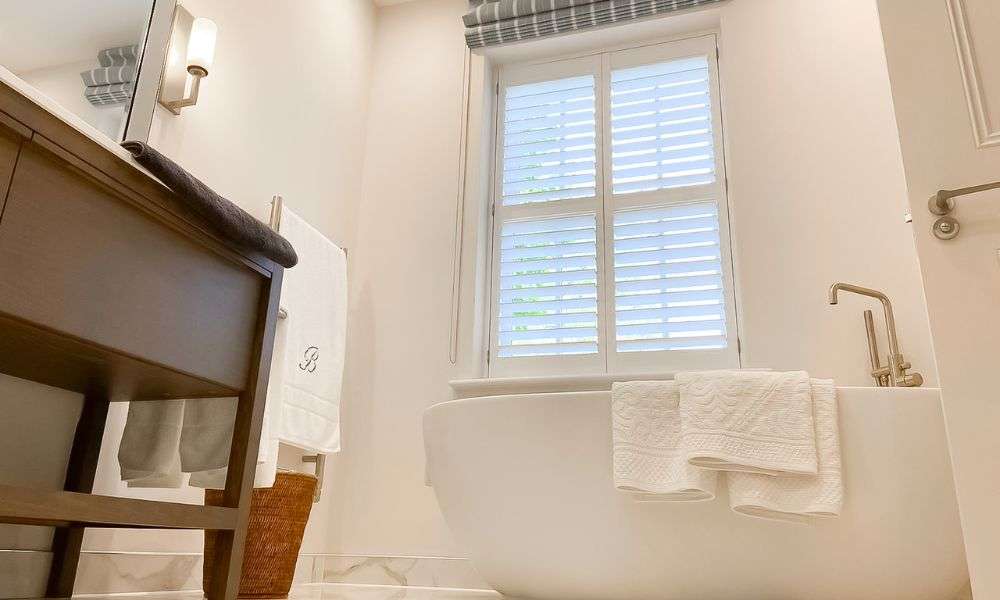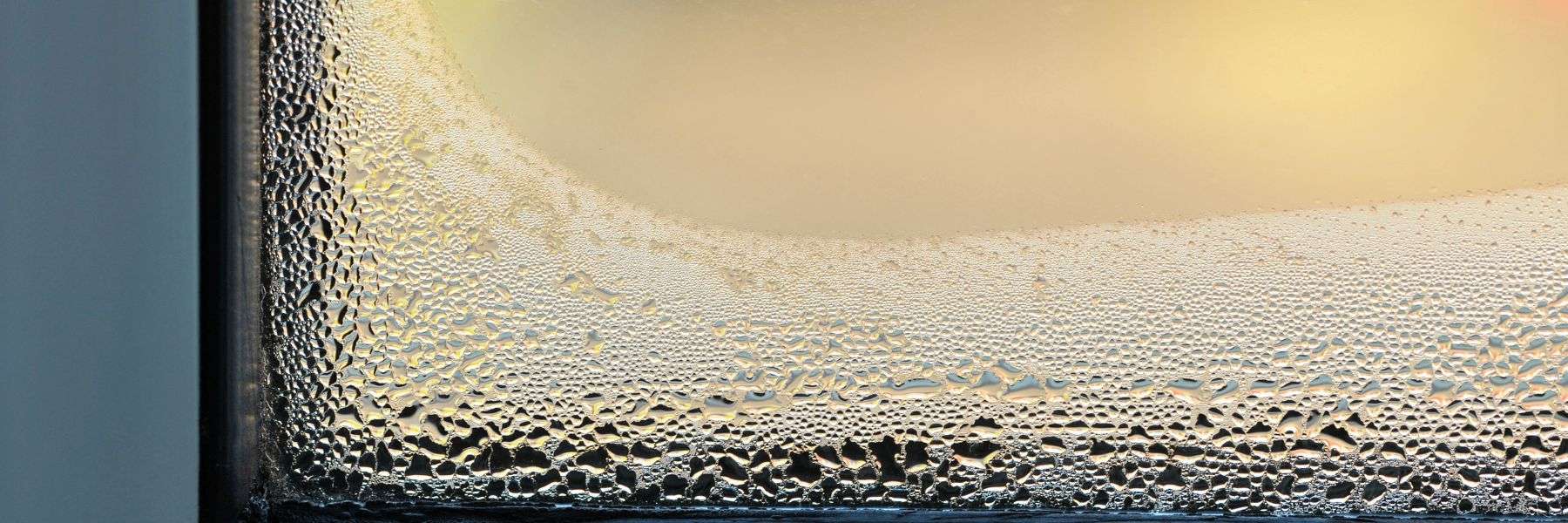As winter approaches, a temperature dip, especially at night, can cause an inconvenience most property owners do not want to face when they wake in the morning – condensation. Wet, dripping windows, if left, can lead to the growth of mould which could affect your health. To help, we’ve put together some useful information to help you understand what causes condensation and tips you can follow to stop condensation on your windows.
What causes condensation?
Condensation forms when the warm air in your home comes into contact with the cold surface of your windows. This then turns into a liquid which can run down your windows onto your window seals. The main contributing factors of condensation include lack of ventilation resulting in poor air quality, insufficient insulation (too much or too little) and single-glazed or faulty windows.
Tips to prevent condensation on windows

Waterproof PVC shutters are great for windows that attract condensation
Fortunately, there are preventative measures you can take to prevent condensation and prevent this common problem. Follow these tips to make a difference in your home.
- Invest in shutters
Shutters are a great way to help prevent condensation. While they won’t get rid of it entirely their adjustable slats allow you to control airflow and prevent moisture from getting trapped between the covering and window. If you open your windows to let the fresh air in (which is recommended to help remove water vapour) you can use your shutters to adjust the amount of air entering your home, so it doesn’t get too chilly. Unfortunately, some absorbent materials, like curtains, can develop mould as they absorb moisture. Shutters, however, are much more moisture-resistant and less likely to damage if they come into contact with condensation. For bathrooms and kitchens which are particularly prone to condensation, consider faux wood shutters made from uPVC. This waterproof material will withstand humidity providing the perfect solution for moisture-ridden rooms. - Keep your heating down
If you have your heating on high, the contrast in temperatures from inside and outside your home may result in condensation. While you don’t want to feel cold in your home, a consistently lower temperature will help reduce the condensation on your windows. - Add humidity-loving plants
Decorate rooms where condensation is more common with indoor plants that love moisture. A Peace Lily is perfect for the bathroom as it absorbs humidity in the air through its leaves. Other great natural dehumidifiers include a Pothos (devil’s ivy), Aloe Vera, Spider Plant and Ferns. - Move your furniture
To improve ventilation in your home and prevent condensation, move your furniture away from the walls. Creating space around your furniture will allow the air to circulate better. - Address your windows
If you have old single glazed, or damaged windows contact a window company to take a look. Double-glazed windows provide an extra panel creating a barrier from the outside. If there is condensation appearing inside the panels, then this could mean the seal has failed. And if you do have condensation on your windows, make sure you do the obvious and wipe them quickly to avoid water build up and mould. - Target rooms prone to moisture
Steam from showering or cooking can increase moisture in the air and the amount of condensation on your windows. Make sure you turn on your extractor fan in your bathroom and kitchen to limit the rise in moisture. You can also use dehumidifiers in rooms where condensation is present. A good dehumidifier will read the moisture in the room and get it at the optimum level – you might be surprised by the amount of water that it collects!
By taking action against condensation, you’ll be creating a more healthy living environment. We can advise on the best shutters for your windows to help with your condensation concerns. Find out more about our shutters here, or contact us for a free consultation.
For more tips, case studies and inspiration, you can also keep up to date with our latest news by following us on Instagram and Facebook.

